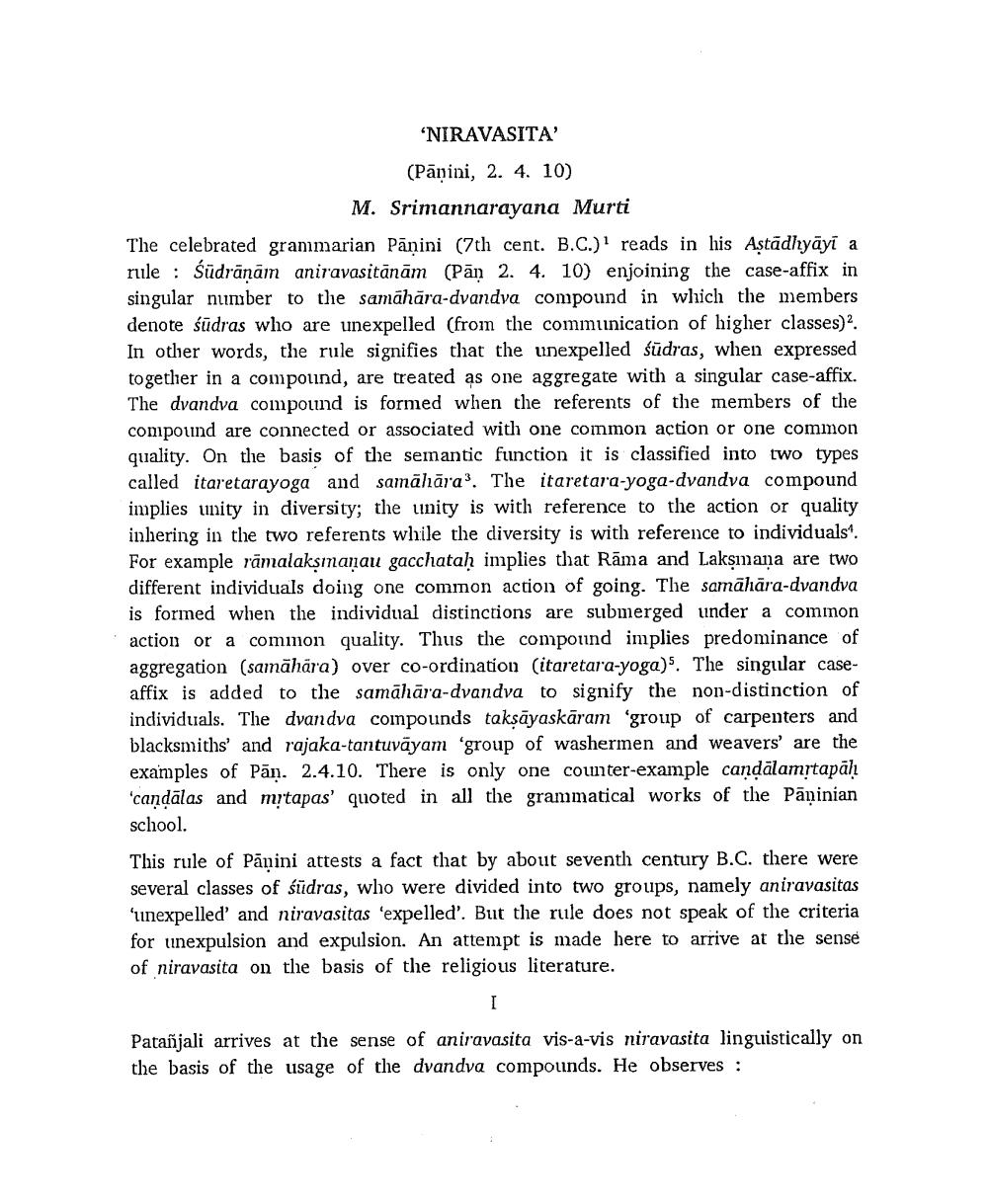________________
‘NIRAVASITA'
(Pāvini, 2. 4. 10)
M. Srimannarayana Murti The celebrated grammarian Pāṇini (7th cent. B.C.)' reads in his Aștādhyāyī a rule: Śüdrāņām aniravasitānām (Pān 2. 4. 10) enjoining the case-affix in singular number to the samāhāra-dvandva compound in which the members denote śūdras who are unexpelled (from the communication of higher classes). In other words, the rule signifies that the unexpelled šūdras, when expressed together in a compound, are treated as one aggregate with a singular case-affix. The dvandva compound is formed when the referents of the members of the compound are connected or associated with one common action or one common quality. On the basis of the semantic function it is classified into two types called itaretarayoga and samāhāra”. The itaretara-yoga-dvandva compound implies unity in diversity; the unity is with reference to the action or quality inhering in the two referents while the diversity is with reference to individuals. For example rämalakṣmaṇau gacchataḥ implies that Rāma and Lakşmana are two different individuals doing one common action of going. The samāhāra-dvandva is formed when the individual distinctions are submerged under a cominon action or a common quality. Thus the compound implies predominance of aggregation (samāhāra) over co-ordination (itaretara-yoga)s. The singular caseaffix is added to the samāhāra-dvandva to signify the non-distinction of individuals. The dvandva compounds taksāyaskāram 'group of carpenters and blacksmiths' and rajaka-tantuvāyam 'group of washermen and weavers' are the examples of Pān. 2.4.10. There is only one counter-example candālamstapāh 'candālas and mịtapas' quoted in all the grammatical works of the Pāṇinian school. This rule of Pāṇini attests a fact that by about seventh century B.C. there were several classes of südras, who were divided into two groups, namely aniravasitas ‘unexpelled' and niravasitas 'expelled'. But the rule does not speak of the criteria for unexpulsion and expulsion. An attempt is made here to arrive at the sense of niravasita on the basis of the religious literature.
Patañjali arrives at the sense of an iravasita vis-a-vis niravasita linguistically on the basis of the usage of the dvandva compounds. He observes :




